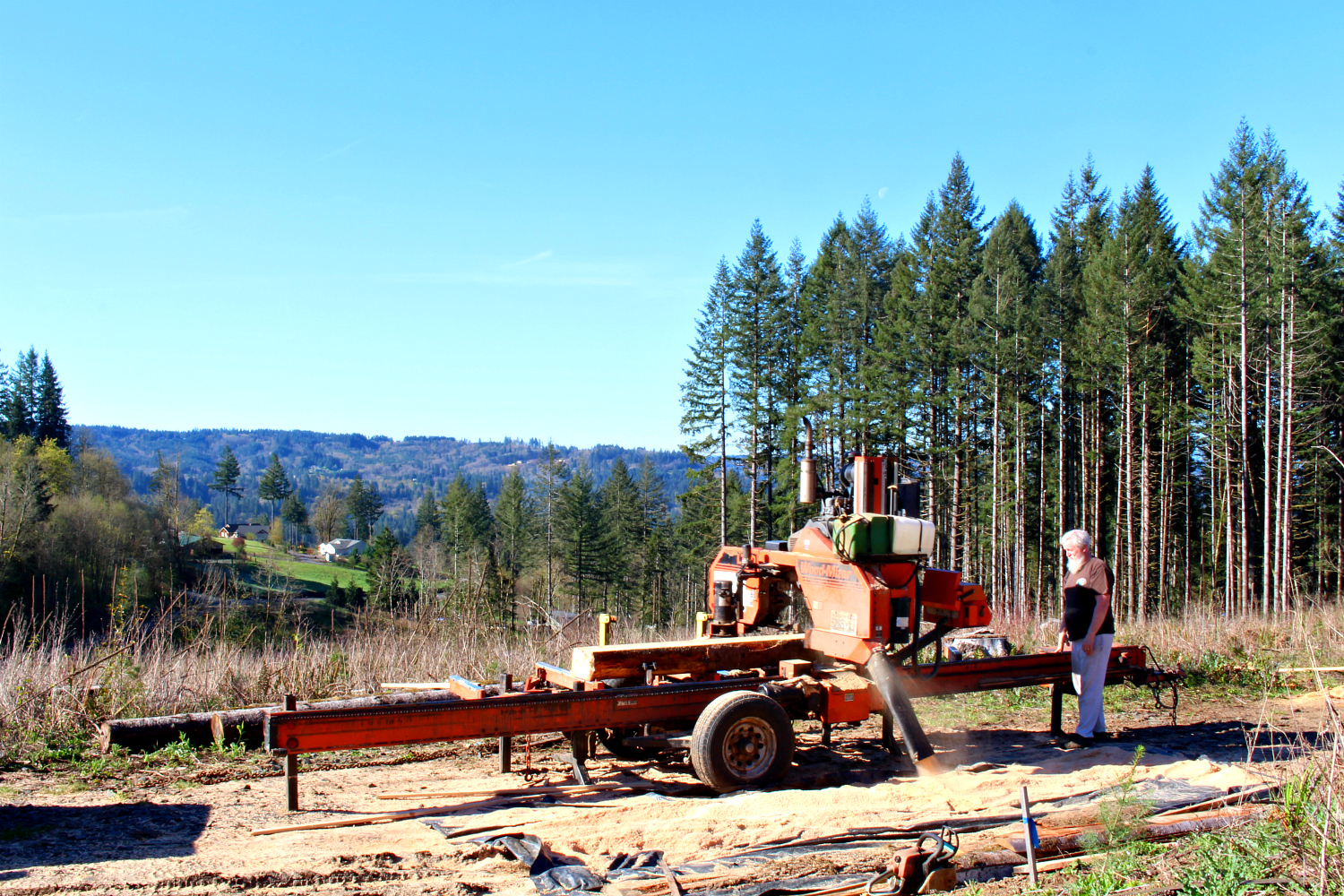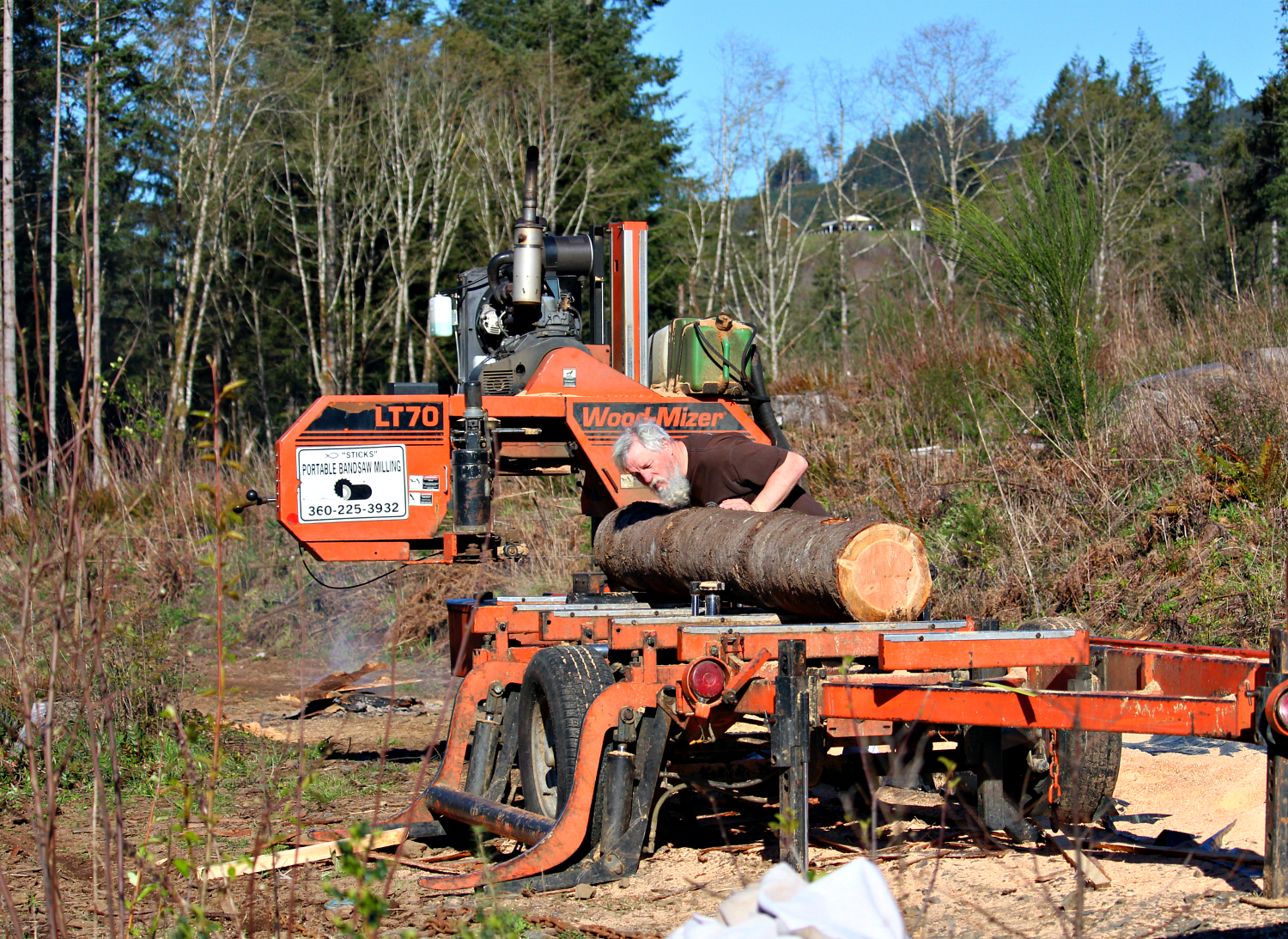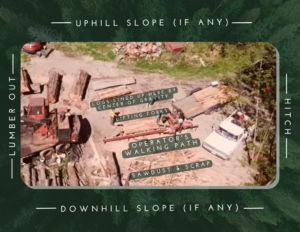Any Questions?
“How much?”
This is a difficult question to answer as every cutting job is unique and there’s lots of wiggle room to give you the biggest bang for your buck.
Some basic rates are as follows (click to access our Milling Contract for a complete list of considerations):
- Setup Fee: $50 to set, level, and otherwise prepare the saw on your site (This typically takes 10 to 45 minutes depending on terrain.) within twenty miles of our location. After the first twenty miles, it is $2.00 per mile to your location.

- Milling Fee: There are two possible fee procedures that apply to ALL sawing jobs: hourly rates or board-foot rates. This is to ensure appropriate billings to BOTH parties. For small logs, an hourly rate of $175/hour applies, as determined by clock hours on the machine. I ask for a minimum 3-hour charge unless you bring the pieces to my location (in which case, there is no minimum).
For large logs, the board-foot procedure applies. I charge $0.60 (soft wood) to $0.70 (hard wood)/board-foot for good, completed lumber. If we have a rotten log and you get NO usable lumber, no charge applies. If I cut beams or 2X4’s, board-foot rates apply regardless of dimension. However, if we are exclusively cutting thin stock (less than 1” thick for all logs), a higher board-foot rate will apply. Generally, my customers get a mix of thin and thick material (making a different board-foot rate for different dimensions inappropriate). Any travel to Oregon will incur an additional $40 fee since it requires me to suppress my desires toward rush hour road rage. - Blade Fee: I charge $40/blade when they encounter metal or other hard material that destroys the blade. Otherwise, there is no blade charge for normal wear and tear. I decrease the chances of this happening, however, by bringing a metal detector to the job site.
- Travel Fee: This MAY apply depending on distance. Typically, I do not charge mileage within 20 miles of my home. Any job location beyond the 20-mile radius is charged an additional $2.00 per mile (one way).
- Sales Tax: I charge sales tax based on job location. Tax rate is based on current Washington State DOR rates.
- Due Date: Payment is due upon completion of the job. If this is not possible, partial payment can be an option with a payment plan to apply as agreed.
Remember: I cut by the finished board foot, not by a specific quote. If I estimate a pile of logs has 1000 board feet in it but they yield 2000, YES, I will charge you for board feet produced, not the original estimate of 1000 board feet. It is more expensive to you, but you also end up with twice the material. On the other hand, I also have customers who ask for a specific amount of material, and we stop cutting when that amount is reached. As you can see, every cutting job can be altered specifically to meet your needs.
“How should the logs be presented for you? How much space do you need?”
My mill is approximately the size of a large boat so I need to be able to pull that up alongside the downhill side of your log pile. The pile should be lined up by center of gravity like a stack of pencils.
The diagram below should help a bit. Click on it to get a better view and it will open in a new tab. If you need some more clarification, feel free to give us a call and we can chat!
“What is a board foot?”
A board foot is a wood measurement for a piece of lumber 12″ wide by 12″ long by 1″ thick for estimating purposes. Board foot, or board feet, is commonly abbreviated as FBM, BDFT, or BF.
“How do you change a blade?”
Video credit: Marshall Himes
“If you cut for me, what are the site requirements?”
If you require a site review, there will be a minimum $30 charge (dependent on time and travel to the cutting site).
If a truck hauling a ski boat can get to your logs, chances are, so can I. A clean water supply is generally needed to clear the saw workings and lubricate the blade. Access to restroom facilities is welcome!
I expect the logs to be stacked on-site for easy loading to the mill. Otherwise, the customer must have equipment to manipulate the logs as needed. There must be enough room to tow the mill to a relatively flat site. If there is no equipment to move the logs, then the mill MUST be on the downhill side of the logs, and the logs must be able to be rolled onto the loading forks of the saw.
“Do I have to get dirty?”
Absolutely YES! However, there’s also an option. Usually, rather than hire another person and charge his or her services to you, I highly recommend that you or your representative plan to spend time with me on the job as the off-bearer and executive decision-maker. Although it is a noisy job, I have found that ALL of my first-time customers have enjoyed the experience, and often, we cut oddball stuff per their direction once they see the possibilities with this process.
“What are storage and stacking considerations for my finished material?”
It is my preference to keep the saw running and I expect the customer to stack finished boards. However, I typically help stack because I’m just an awesome guy and one person does not easily manipulate large boards. Sticker boards (spacers) are highly recommended while stacking your finished lumber. With the sawmill process, sticker boards are produced as part of the process at no charge to you. Lumber should be stacked on a flat surface, off the ground, or on a truck or trailer to be taken elsewhere by the customer.
“What do you usually produce in a day?”
With good logs, I usually produce anywhere from 2- to 3-thousand board feet, depending on many factors. When I work a full day, I expect to generate $700 in milling charges/day, minimum. Going back to the “How Much?” section, actual charges are a function of the lumber produced.
“How do you mill a log?”
Video credit: Marshall Himes
“What about cleanup?”
Most sawdust is usable in plant bedding or for pet beds (cedar). Scraps will need to be disposed of as firewood by you, or they can provide a nice weenie roast bonfire for the neighborhood.
“Why not sell my logs to the mill?”
- If your logs “scale” out to a specific value at the mill, I can potentially yield 50% above scale for finished boards. Again, this gives you better value for your logs compared to selling them to a mill.
- If you choose to sell them to a mill, you will incur more costs. Three main contributors to excess charges include transportation of the logs, harvesting, and clean-up.
- If you sell the logs then buy finished material from a local lumber yard, there’s that “sales tax thing” again.
- Buying lumber at the store restricts you in the species of wood and choosing your own dimensions.
- For some species of wood, you would get finished material at approximately half the cost of store-bought product. For cedar, oak, maple, et cetera, your savings are significantly more.
“What is your Washington Business License number?”
UBI#: 602324392
“What does your contract state?”
Here is the link to the PDF document of our Milling Contract. If the document does not open on your device, please don’t hesitate to contact us.


